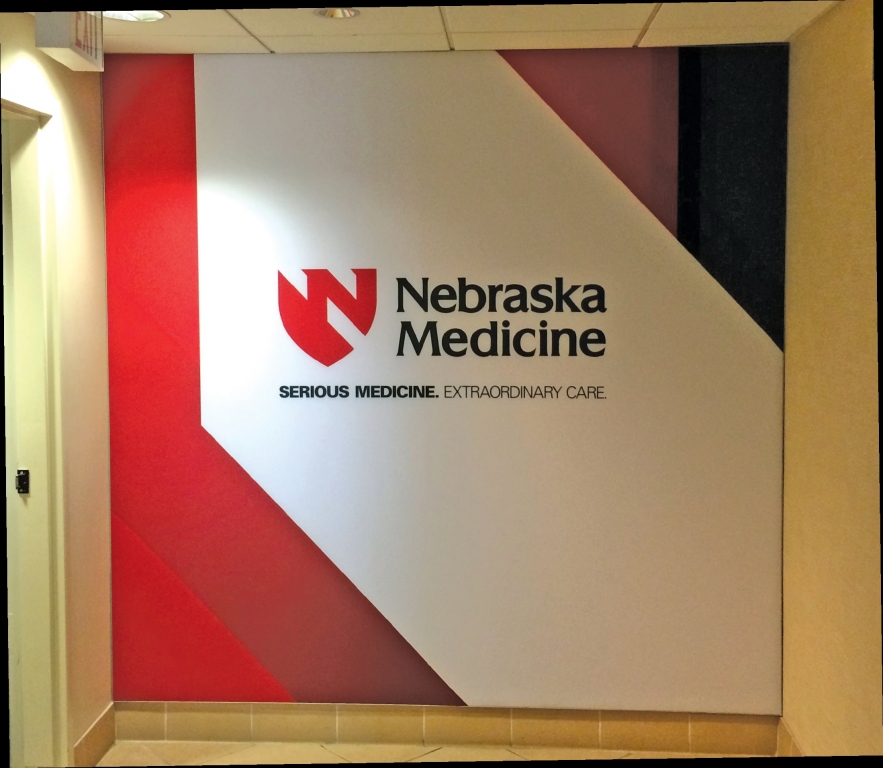Since 1895, Renze (Omaha, NE) has produced promotional printed materials, POP, tradeshow graphics and other sales tools for Woodmen of the World and companies large and small throughout the Midwest. And, like most companies that have remained successful for more than a century, they’ve adapted to emerging trends to enhance their bottom lines. Thus, wallcoverings have become an increasingly key part of Renze’s repertoire. Mike Compton, the company’s executive vice president, said they comprise 5 to 10% of its revenue, but the number has grown precipitously
over the last five years.
“Educational environments, healthcare facilities, corporate lobbies, schools and sports stadia are among the types of facilities we serve in the wallcoverings market,” he said. “Currently, fabric installations represent only 10% of this business, but that will increase as customers see more such finished products. We recommend fabrics for customers who want the ability to easily change murals, yet provide a seamless look and feel.”
Renze completed one such installation for the Univ. of Nebraska Medical Center in Omaha. The school rebranded its facilities, and wanted to update its sign program, and wallcoverings were updated, as well as banners, directional signage, freestanding displays and other environmental graphics. The shop, which has served the university for decades, collaborated on the project with Daake, the university’s design partner.
To secure the fabric wallcovering, Renze installed REXframe™ aluminum hardware, which provides the appearance of wallpaper but can be changed out frequently. For installation, Compton said using silicone-edged graphics helps because they enable the fabric to be stretched taut without wrinkling, and they replicate the appearance of a seamless wall. For graphics that the client knew wouldn’t require changeovers, Renze incorporated vinyl wall wraps.
Renze imprinted upon specified material from Aberdeen Fabrics on its Mimaki JV5-320DS dye-sublimation printer (which was altered with proprietary enhancements by a reseller, he said) at 540 x 720 dpi – Compton noted the machine’s maximum, 1400-dpi capability, but said higher resolution didn’t noticeably improve image quality from the graphic’s typical viewing distance.
“Improvements made with direct-dye-sublimation printing have really opened up this market for us,” Compton said. “Only recently has direct-printing quality been able to match indirect printing. Also, improvements with industrial-sewing technology now allow us to finish graphics more quickly and
accurately.”
Advertisement



 Tip Sheet3 days ago
Tip Sheet3 days ago
 Business Management1 week ago
Business Management1 week ago
 Women in Signs2 weeks ago
Women in Signs2 weeks ago
 Real Deal4 days ago
Real Deal4 days ago
 Editor's Note1 week ago
Editor's Note1 week ago
 Line Time2 weeks ago
Line Time2 weeks ago
 Product Buying + Technology1 week ago
Product Buying + Technology1 week ago
 Women in Signs4 days ago
Women in Signs4 days ago









